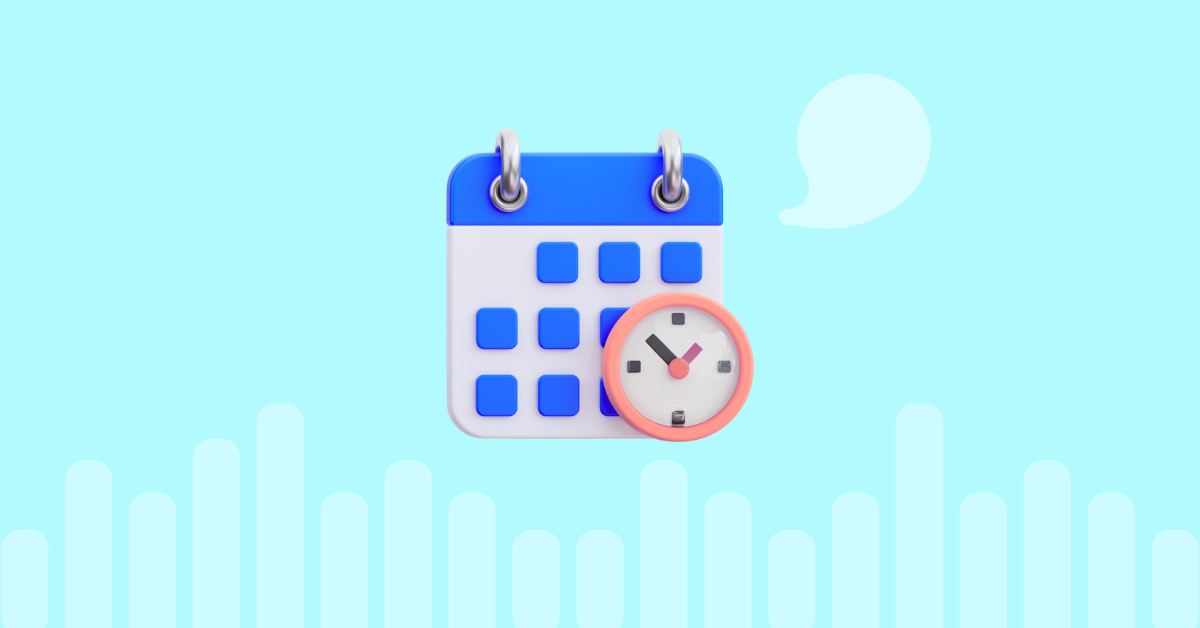
Table of contents
Cold calling has become one of those things – like email – that experts predict is ‘dead’ or about to die every so often. However, to everyone’s surprise, cold calling is still alive in 2022. Companies use it all the time, from your local mom-and-pop store to multi-national corporations.
Not all companies have people who are successful at cold calling which is probably why everyone thinks it’s a bad idea. If you ask around, you’ll get various responses for why cold calling is dead, including but not limited to:
- People hate salespeople who interrupt their day
- Cold calling is a breach of privacy
- It has a really low response/conversion rate
- It’s a sales method with the lowest ROI
- Salespeople hate cold calling, so they lose motivation
The reality is that cold calling can be all of the above, especially when sales teams cold call potential clients without any experience, technique, or strategy. Just like any other sales skill, however, becoming good at cold calling takes time and effort. If you train your sales team on the best time to call and other techniques, cold calling becomes an effective sales tool.
Why bother with cold calling?
In the age of social media marketing and influencers, should you even bother with cold calling prospects? The answer is a resounding yes. Even with the rise of online marketing and other channels, phone calls are one of the top channels of communication between businesses and their audience.
There are many ways to channel prospects through your sales funnel. From referrals, upselling, and cross-selling to advertising, there are opportunities to sell everywhere. Most salespeople rely on existing relationships to close deals but you will limit growth if you ignore untapped segments or prospects who have not shown any interest in your products and services.
Suppose you offer a subscription-based service for retail customers. If you only rely on upselling to existing customers, there’s an upper limit to your sales figures. Cold calling provides your business the opportunity to expand and grow beyond your current levels. Timing plays a crucial role in cold calling and contacting someone at the wrong time can and will lose you a potential sale.
But before we dive into the dos and don’t of call calling, let’s talk about definitions and regulations first.
What is cold calling?
Cold calling is the practice of contacting customers who have not previously expressed an interest in your products, services, or business in any form. Cold calling can happen over the phone, in person (door-to-door salespeople), or even via email. From the point of view of a customer, it’s an unsolicited call from a company aimed at selling them something.
When you put it like that, it’s understandable why cold calling gets such a bad rep. You are asking your sales team to call potential customers out of the blue, interrupt their day, and make a sales pitch. Few people like cold calling, whether you’re calling the customer or receiving one such call.
But it’s still a valid and highly useful sales technique, provided you do it right.
Warm calling, on the other hand, means you are calling someone who has raised their hand or who’s interested in buying something from you. They could have filled out a form, sent you an email, or approached a salesperson at a conference. Quite understandably, warm calls tend to have a higher conversion rate than cold calls.
Cold calling is not random
One common misconception about cold calling is that it’s random. Many people think that salespeople pick up the phone, dial some random numbers, and talk to whoever answers the call. Remember that even if you get a referral from an existing customer, it’s still a cold call if the prospect has not shown interest before. If that’s what your teams are doing, then they are going to fail.
Most companies use some data on prospects and target customers who meet specific criteria to close deals. It’s a challenge to deliver a sales pitch to someone who has not heard of you or your products and they’ve not shown any prior interest. While cold calls were initially about giving a sales pitch, it has evolved into a sophisticated communication tool. Not only does it increase the chances of success but you’re not wasting time for anyone.
Suppose your business involves selling funky t-shirts with memes/funny cartoons on them. If your main audience is teenagers and young adults, you would not cold call seniors or bankers. Similarly, if you are selling investment services or accounting software, the best time to cold call is NOT 9 AM. Your potential customers have just come into the office and want to work. They do not want an unsolicited phone call to start the day.
With so many ways to go wrong, you can see why cold calling takes data, proper techniques, and a smart strategy to be successful.
Regulation and compliance
Contrary to popular belief, cold calling is not illegal or banned in most places. However, with the rise of modern internet technology making it easier to cold call in bulk, many experts have criticized it. Unfortunately, scammers have also used cold calling to perpetrate fraudulent schemes and infect their computers with malware.
So it shouldn’t come as a surprise that many nations have regulations and rules about cold calling. Often implemented by the telecom regulator, the legislation controls or limits how, when, and whom a business can cold call. Legislation often takes the form of Do Not Call lists (DNC), restricting the time of day when you can cold call, as well as enforcing truth in advertising.
Just as an example, the FTC requires businesses within the United States to check the DNC list every month and remove registered numbers from their cold call lists. However, some organizations are exempt from these rules including charities, political organizations, companies with whom the prospect has a pre-existing business relationship in the last 18 months, and if a person has given written consent.
Other countries such as the United Kingdom, Canada, Japan, and Australia also have similar legislation in place. The European Union has passed the General Data Protection Regulation (GDPR) that mandates compliance by companies anywhere in the world if they collect or use data of an EU citizen.
What are the best techniques for cold calling?
Since scammers and fraudulent companies also use cold calling, it becomes important to establish that you are a legitimate organization. It’s why some teams use cold calls as an introduction to a potential customer rather than a sales opportunity.
In other words, they use the calls to learn more about the customer and their needs. If the person indicates any interest, then try to pitch a sale or talk about your products. The salesperson will often schedule a follow-up call afterward. At no point are they trying to close a deal or get a yes from the customer. It might still happen but that is not the goal at all.
Some great methods to refine your cold calling process include:
Use technology for tedious tasks
This is perhaps the biggest advantage you can offer your sales team. Invest in technology that eliminates or minimizes the tedious, administrative, and repetitive tasks in a day. Some services you should consider include a CRM, a VoIP phone system, a customer research/contact service, etc.
A comprehensive CRM system such as Salesforce. If you’re not already using something like this, it’s about time to start. Make life easier for salespeople by managing customer data efficiently. A messy database with duplicate, missing, and bad data will slow down even the most successful salesperson.
A VoIP phone system that offers flexibility and reliability. Features like call forwarding, call transfer, visual voicemail, and others ensure that a salesperson will never miss calls. Nor will they waste time in hunting down client information as the phones will integrate with your CRM of choice. Some VoIP systems will attach notes or transcribed messages to the CRM record automatically, thus saving you even more time.
Many services will provide contact data and information on organizations. However, try looking for one that offers additional context such as buying triggers and deep demographics. These tasks will usually take additional hours for your sales team.
Another thing most salespeople hate about cold calling is the process of calling contacts. Some calls will go to voicemail, sometimes the salesperson has to wait on hold. Even if you’re not waiting for someone, you still have to navigate phone trees and talk to gatekeepers before reaching the person. Invest in a system that will automate these manual tasks and allow salespeople to focus on the call and the person at the other end.
Develop and use effective scripts
Cold calling someone without a script is not going to succeed. Yet many people think following a script makes you sound like a robot. It’s quite possible to use scripts and not sound like you’re reciting lines. Think of cold calling as performance over the phone and you’ll see how it can help you succeed.
Scripts help you stay on track and anticipate objections in advance. With a solid introduction and value proposition, you start on the right foot. Then you can ask a few open-ended questions to gauge their interest and understand the prospect’s needs. Remember to listen to them and not simply wait for your turn to speak.
Initially, a high percentage of your calls are going to have negative outcomes while you’re learning the ropes. So it’s important to have a response to common objections. It’s hard to counter objections on the fly, so preparing with a script can help out a lot until you can do it without one.
Plan your call schedule
When cold calling, you cannot simply contact people according to your schedule from 9 AM to 5 PM. One way to figure out when to call is to look at call records of customers who have purchased from you. Suppose you find that your prospects are more likely to say yes if you call them just before lunch. Plan your calls so you reach them at the right moment.
Another thing to keep in mind is timezones. Lunchtime on the east coast is when most people on the west coast are starting their day. So you can stagger your calls, starting from EST, and work your way across the timezones. That way, you will reach all your prospects at the right time, improving your chances of closing a deal.
Be prepared to follow up and make multiple calls
Getting rejected and hearing no all the time is hard. But most research indicates that it takes several calls to a prospect to get them to say yes and sign on the dotted line. You will rarely close the deal on the first time you cold call a prospect. But that doesn’t mean you should give up if someone says no.
Be clear on what you’re asking them and provide them with concrete next steps. Your prospects have no idea about your selling process, so tell them what comes next. Will you schedule a follow-up call? Will someone else contact them to pitch your product? Do you plan to present over a video call or meet in person for a demo?
Embrace voicemails
Most of your cold calls will go to voicemail, that’s a fact. So your team needs to learn how to leave effective messages for prospects. Remember that you’re not here to deliver a sales pitch over voicemail. Your goal is to have them call you back.
Keep your messages short and deliver one idea only. Maybe you have a referral from someone they know. Or you can solve a problem they might have. Be clear with your message. As with phone calls, be prepared to leave several voicemails. By conveying a single idea in each voicemail, you can leave several without repeating yourself and still be relevant.
Learn from every call
The key to success at cold calling is to learn and get better next time. If you stumble on your introduction in one call, work on getting better at it. If a prospect says you are talking too fast, practice talking at a slower speed or vary your tone. Analyze your call history and see where you get the most objections from prospects. Change your script to reflect changes and try again.
Don’t try to deviate from your script for the first few calls. After that, you can incorporate changes and test them again. Once you develop a few good scripts, you will start to see more positive reactions consistently.
Practice, practice, practice
Don’t stop once you have good scripts. You need to practice with your colleagues or someone to get better at delivering them. Try to work with different people so you get used to multiple voices and communication styles. Ask an assistant to vary their level of objections with each call, so you need to adapt accordingly. For one call, they may say yes immediately. On another, they may be rude or belligerent. Try to roleplay different situations as well.
The best time and day to cold call
Timing is everything in cold calling. Even with the best intentions, you’re still interrupting someone’s workday by calling them. When you call can mean the difference between a win or lost opportunity. So what’s the best time of day to cold call?
Cold calls seem to work best when you reach prospects just before they leave the office or at the end of the day. In most cases, this is some time between 4 and 5 PM. Another good time is to call just before lunch. It could be around noon or 1 PM local time.
Experts theorize this is because most people don’t start new tasks at the end of the day or just before lunch. They are more likely to have time to listen to your pitch and have a conversation. You are less likely to interrupt a crucial meeting or urgent tasks at these times.
Contrary to the best time of the day, the best day of the week is not Friday for cold calling. Successful salespeople get better outcomes by calling on a Wednesday or Thursday (next best). It might be that people have settled into their work routine by then, so they are receptive to new ideas and plans.
What is the worst time to cold call?
So which time or days should you avoid for cold calling? Try not to call anyone during lunch, few people like talking on the phone while they are eating. It’s one of the few times people get to relax on the job so they will be less receptive to a cold call.
Another bad time is early in the morning such as before 9 or 10 AM. Most people are just coming in and want to finish admin tasks or complete leftover jobs from the previous day. Offices with daily meetings are more likely to schedule them in the morning as well.
Similarly, Mondays and Fridays are the worst days of the week to cold call. Mondays are usually quite busy in many companies, with weekly meetings or appointments. No one wants to start the workweek with cold calls. On Fridays, people are more focused on finishing urgent tasks so they can go home and relax. Prospects generally don’t like to talk or think about starting new projects on a Friday afternoon.
B2B Cold calling
Any script should have an introduction, build rapport with the prospect, includes an offer, and follow up steps. If you’ve done any research on the person and company you are reaching out to, there should some connection you can make. Refer to a conference or seminar they attended recently or any particular issues/awards the business has. In other words, show the prospect that you’ve done some work before calling them.
A good script example is the following:
Rep: Hi (name) how are you? I’m (name) from (company). I’m calling you today because we help businesses like (company name) achieve (target, goal) by using (product/solution). Do you have some time to talk?
If at this point, the prospect appears receptive, the rep can then move on to the offer.
Rep: I’ve done some research on your company and found some (issue/pain point) that could be (slowing growth, affecting sales). I’ve helped many other businesses with similar issues and we’ve shown (growth numbers, stats) for their (department/product). Would you be interested in a conversation about this?
Once again, if the prospect shows some interest, the rep should schedule a follow-up meeting that’s longer and better suited to their schedule. They can also offer to include any other people in the meeting like a manager, accounting rep, etc.
Rep: I’d like to schedule a meeting so we can talk about this in-depth. Would (name a date/time) work for you? I can show you the platform and how it can benefit (company name) in 30 minutes.
B2C Cold calling
Cold calling is a common practice in real estate where agents need to generate leads for property listings. A good way to pique curiosity in a prospect is to highlight recent sales in their neighborhood. A sample script could be something like this:
Rep: Hi (name)! I’m (your name) working at (real estate agency). I’ve recently sold several homes in your area for more than the asking price in the last few months. It’s a fantastic place to live in and many buyers are looking for homes. Would you be interested in selling your home in the future?
As with b2b calls, reference a pain point or a target for the prospect. Your goal is to cultivate a relationship, not close the deal over 1 call.
Read this post in: Español
More from the blog
Want to improve your business communication?
Unlock enterprise-class call center power at affordable prices – no hardware, no delays, no surprises!








